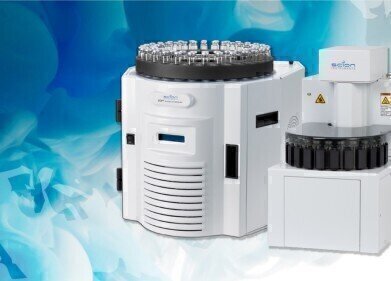Industrial News
How Old Are Mummies?
Aug 30 2014
We all know Egyptian mummies are old. However, the generally accepted belief was that the oldest among them stretched back a paltry 4,500 years. Now, thanks to the scientific technique of chromatography, researchers believe that they may in fact be a whopping 2,000 years older than that! That is old!
The earliest known burials were always believed to be dated to around 4500 to 3350BC. However, until recently, it was believed that prior to 2500BC, the technique of embalming bodies using a delicate mixture of oils and resins was not in common use. Instead, it was thought that the effects of mummification were achieved by a simpler but much lengthier process – nature. By wrapping the bodies in cloth and leaving them outside to brave the elements, the sun, heat and sand would achieve a similar effect as embalmment.
Post 2500 BC Mummies
Now, though, a team from the University of York in the UK led by Stephen Buckley have successfully identified the same sticky resin found in post-2500 BC mummies on bandages dating much further back. The concoction was composed of sugars, animal fats, plant oils, natural petroleum, coniferous resins and antibacterial agents and in roughly the same proportions as that found on the later mummies. Such a discovery signifies that mummies, embalmed in this method, have been around for significantly longer than previously assumed.
The techniques used to identify the implicating substances were gas chromatography-mass spectrometry (GC-MS) and two of its offshoots: pyrolysis-gas chromatography-mass spectrometry (Py-GC-MS) and thermal desorption-gas chromatography-mass spectrometry (TD-GC-MS). These were used to analyse and successfully identify the various components which went into the substance found on the bandaging, which in turn allowed for the link to be made to their age. These techniques were chosen because of their effectiveness in identifying the components of a compound, and the non-intrusive manner in which they do so – such practices do not harm the mummified bodies in any manner, allowing for more extended and thorough research to take place.
To learn more about GC-MS in general, see the article: An Introduction into the Role Of Gas Chromatography-Mass Spectometry (GC-MS) in Metabolomic Analysis.
Such research proves that even the earliest Egyptians were accomplished embalmers, adept at preserving the bodies of their dead for as long a time as was possible. The rare and specific quantities of the materials found in the embalming solution effectively worked to preserve the flesh of the body instead, whilst simultaneously repelling insects or other animals which might damage the body. Using chromatography in this manner is not dissimilar to the way in which Confocal Raman Imaging works – a process whose details and potential applications will be discussed in detail at this year’s 11th Confocal Raman Imaging Symposium in Ulm, Germany, in September and October.
Image Source
Digital Edition
Chromatography Today - Buyers' Guide 2022
October 2023
In This Edition Modern & Practical Applications - Accelerating ADC Development with Mass Spectrometry - Implementing High-Resolution Ion Mobility into Peptide Mapping Workflows Chromatogr...
View all digital editions
Events
Apr 23 2024 Kintex, South Korea
Apr 23 2024 Seoul, South Korea
Apr 28 2024 Montreal, Quebec, Canada
May 05 2024 Seville, Spain
May 15 2024 Birmingham, UK














